Workers Stepped on Terrified Goats and Twisted Their Limbs
Eyewitnesses saw workers hold down and step on frightened goats, bending their legs into unnatural positions as they tore out their hair using sharp metal combs.
Goats are typically combed or shorn for cashmere once a year in the spring moulting season in April and May. According to one farmer, shearing is “very stressful” to them and robs them of their natural insulation, leaving them vulnerable to cold temperatures and illness.
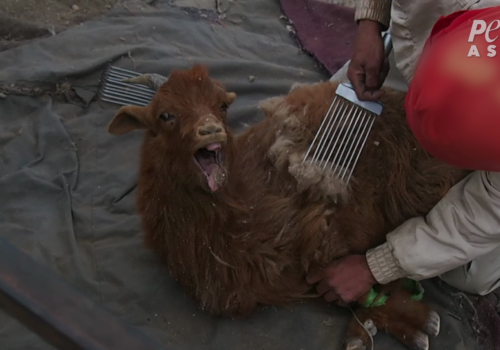
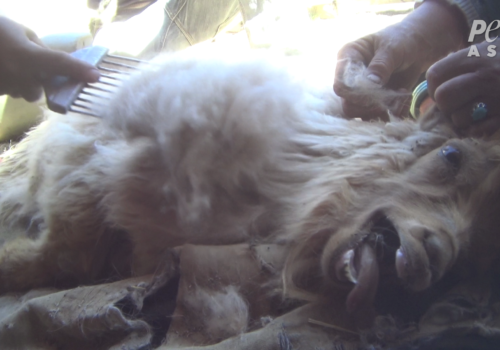
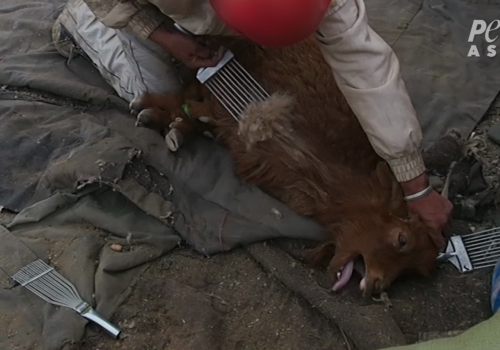
No Veterinary Care Provided
Goats left with bloody cuts from the hair-removal process received no pain relief or veterinary care. One worker simply poured rice wine into an animal’s wound.
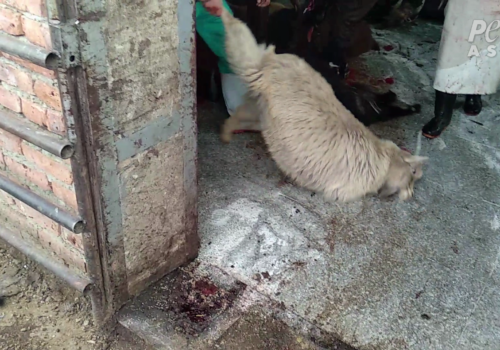
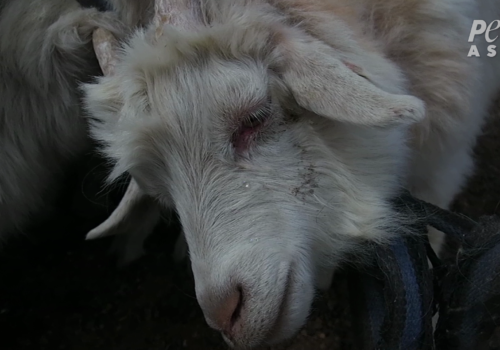
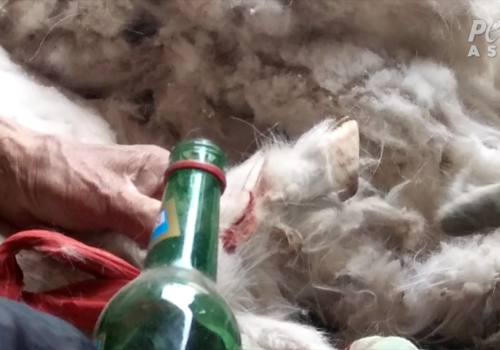
Goats Hit With Hammers and Killed When No Longer Profitable
Cashmere goats deemed no longer profitable endure slow, agonising deaths. At an abattoir in China, eyewitnesses saw workers hit animals in the head with a hammer in an attempt to stun them. In Mongolia, workers were seen dragging goats by one leg onto the abattoir floor before slitting their throats in full view of other goats. They were left to bleed out on the filthy kill floor, and some were seen still moving a full two minutes later.
Their flesh is then sold as cheap meat.
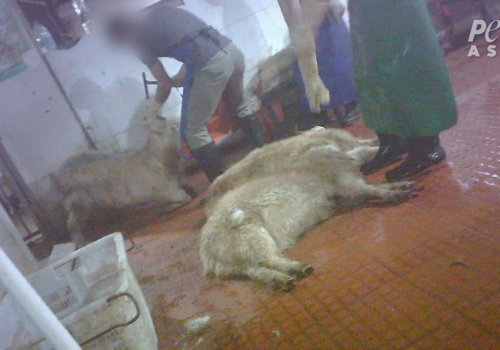
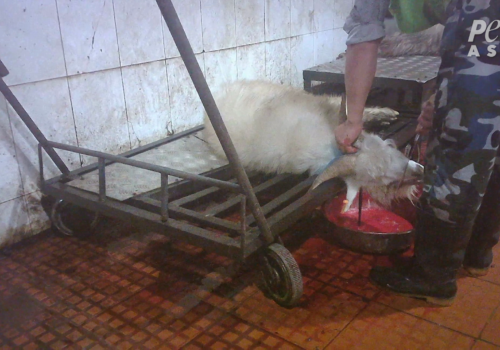
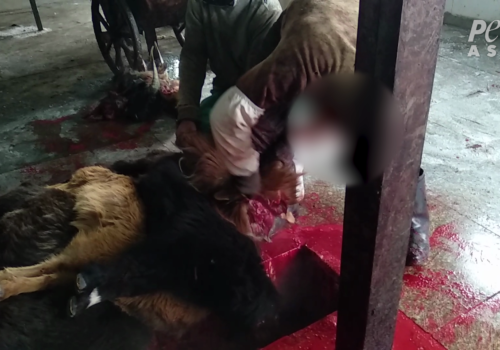
Ninety Per Cent of All Cashmere Comes From China and Mongolia
Nearly all cashmere is produced in China and Mongolia, so if you buy a cashmere item, it probably came from goats who were abused in one of those countries.
One goat produces, on average, only 250 grams of hair that can be used for cashmere each year. This is so little that in order to produce just one cashmere jacket, the hair of six goats is required.
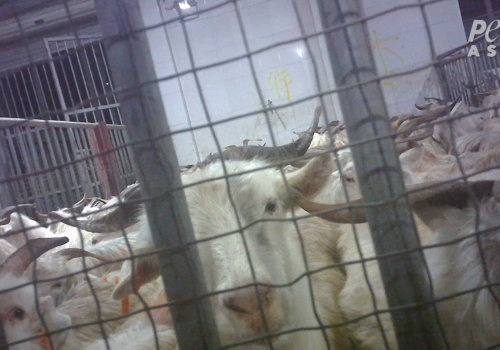
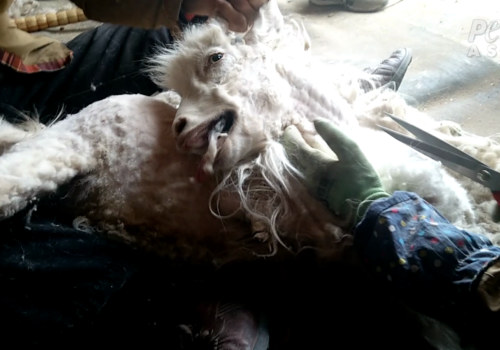
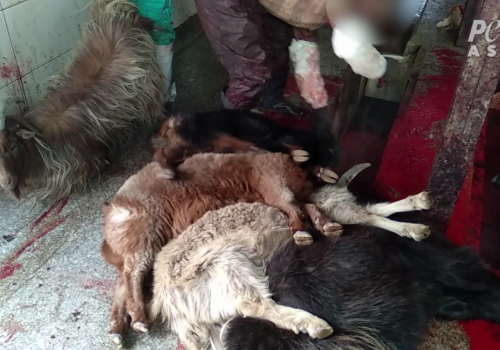
Environmental Devastation
Cashmere also has the most destructive environmental impact of any animal-derived fibre. Because cashmere goats must consume 10 per cent of their body weight in food each day and they eat the roots of grasses, which prevents regrowth, the industry is a significant contributor to soil degradation followed by desertification.
Already, 65 per cent of Mongolia’s grasslands are degraded and 90 per cent of the country is in danger of desertification, which has resulted in some of the world’s worst dust storms on record and air pollution dense enough to reach North America.
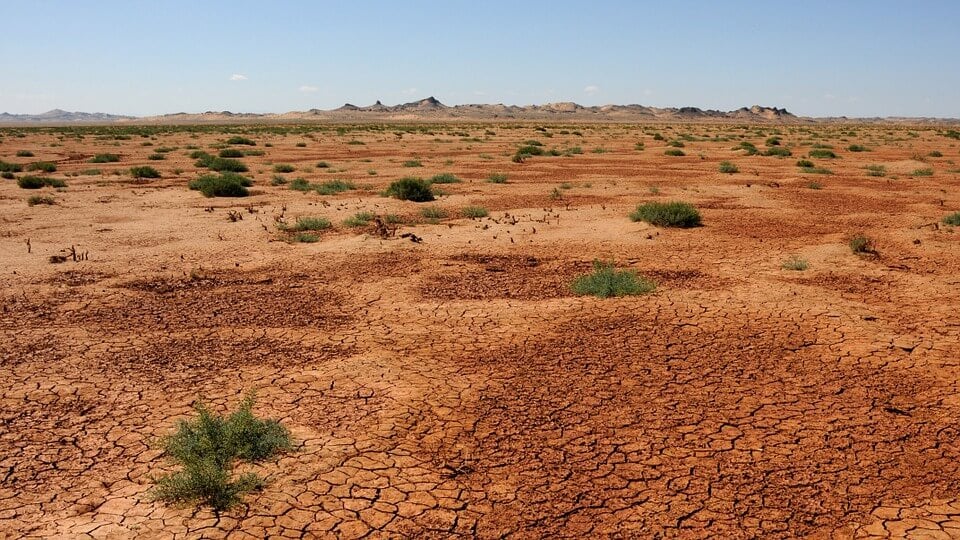
Vegan Cashmere
Luckily, a growing number of designers and retailers – from CROP, which makes luxurious bamboo knits, to Marks & Spencer, producer of the popular Cashmilon™ range – are offering super-soft, warm knitwear that’s kind to animals and the environment.

What You Can Do
China has no penalties for the abuse of animals on cashmere farms, and the situation in Mongolia appears to be much the same. The best way to help these goats is to refuse to support the cruel cashmere industry, by never buying anything made of cashmere.
Warm, stylish, animal-free materials are widely available, so you can leave goats’ hair and other animal-derived materials like wool and fur where they belong: on the animals.
No matter where it comes from or what assurances companies give, cashmere is a product of cruelty to goats, which is rampant in the industry. And when their profitability to the farmers declines, the goats are slaughtered.
H&M – the second-largest clothing retailer in the world – has agreed to ban “conventional” cashmere (the only kind that it sells) as a result of this investigation. Last year, ASOS – which sells more than 850 labels as well as its own-brand clothing and accessories – became the first international fashion brand to announce a ban on the sale of cashmere, which is in force across its influential platform, leaving goats’ hair where it belongs: on the goats. Please help us urge women’s apparel brand Madewell to ban it, too.
All images © PETA Asia

